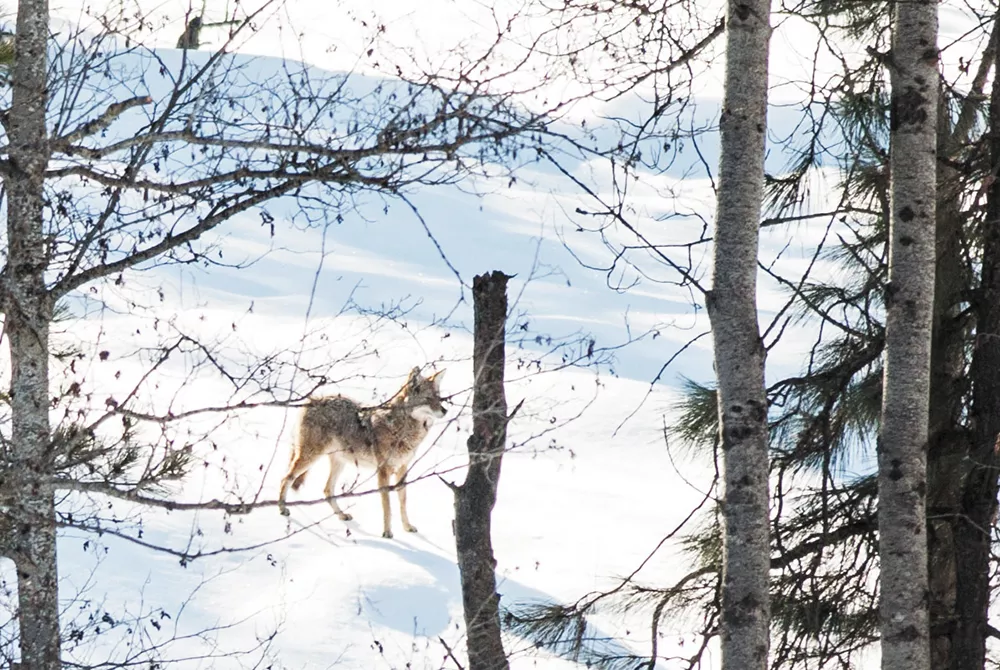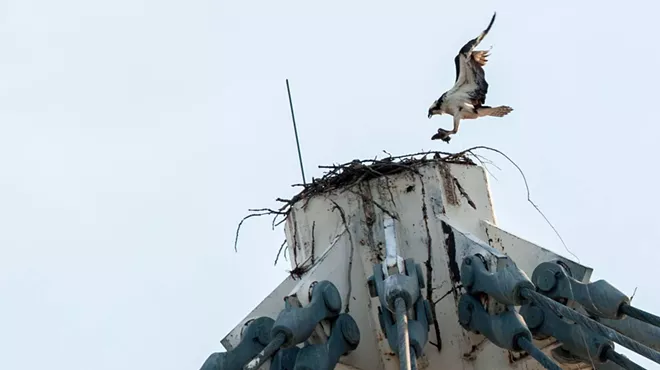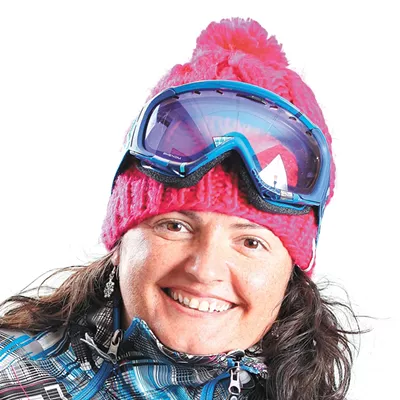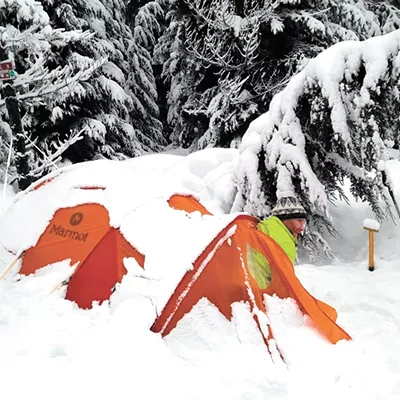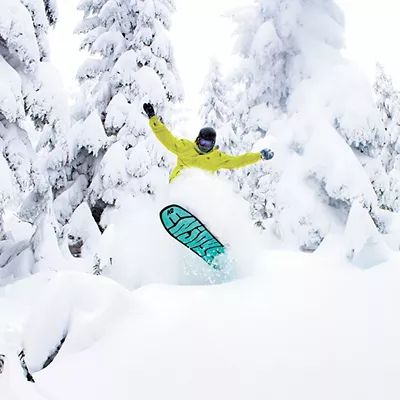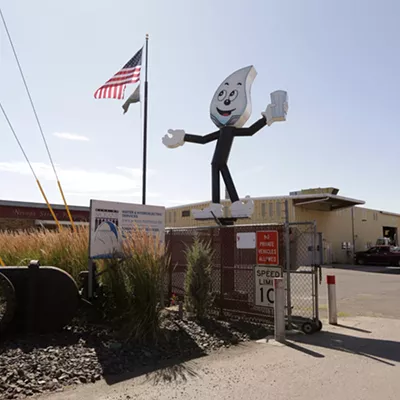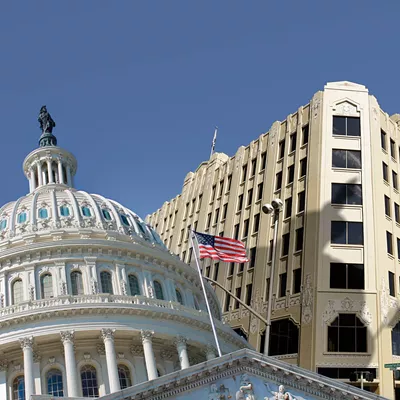Here's a cool little secret for fans of animals: The winter months are often better to spot animals on hikes than summer, spring or fall.
The leaves that would allow animals to hide are off many trees. The snow background makes the animals stand out all the starker. And the comparative lack of food often sends creatures out foraging.
You won't spot the marmots or osprey that dominate Spokane during the summer. But the Northwest still thrives: Winter's a perfect time to see deer, moose, coyotes, eagles and more. And because larger animals prefer lower, less snowy elevations during the winter, you don't even have to climb a mountain to see them.
You just have to know where to go and how to survive when you get there. Here are a few suggestions:
Turnbull National Wildlife Refuge
It's the winter, especially around February, when the Turnbull Wildlife Refuge becomes truly astounding: One moment you're looking out at an icy lake topped by 200 geese, and the next, they've popped up into the air, soaring in formation over the treeline.
Or savor the beauty of a trumpeter swan, long neck curled around its body, alabaster-white feathers almost blending with the pale hues of snow. And if you're lucky — as I was when I went to Turnbull — you'll spot a coyote, softly skulking across the trail.
Iller Creek in Dishman Hills
Deer are a dime a dozen. But moose? Now, a moose, in all its ugly majesty, is special.
During the winter, the Iller Creek trailhead is one of your best bets for moose-spotting, says Jeff Lambert, executive director of the Dishman Hills Conservancy. Just use caution. Moose are no joke.
"Moose are dangerous. Dogs have to be on a leash," Lambert says "You don't shoo moose off of the trail, because they might decide to trample you instead."
Beauty Bay
You've already missed the insane peak of bald eagle season in December, sadly, but make your way up to the areas of Beauty Bay on Lake Coeur d'Alene to see America's avian mascot rule the skies. It's pretty incredible to see them plummet down, claws outstretched, to snatch a Kokanee salmon from the water.
But it might be even more incredible, if you're into the whole beautiful serenity thing, to watch an eagle glide across the backdrop of the snow-dusted hills.
Riverside State Park
First up, check out the Riverside State Park's Little Spokane River Natural Area, off of the Painted Rocks trailhead. The lack of cars or horses, says Washington State Parks Program Specialist Lara Gricar, tends to lend itself more to wildlife spotting. We're talking about deer, turkeys, moose, eagles, quail and blue heron.
Otherwise, Holly Weiler, Eastern Washington regional coordinator for the Washington Trail Association, says you should head north from the Bowl and Pitcher trailhead.
"Almost every single time I go out there I see the mule deer," Weiler says. "Right off of the trail. It's excellent."
Failing that, if you live on Spokane's South Hill, you can often simply look out your front window like Weiler did during our conversation.
"I've got two turkeys walking across my front yard," Weiler says. ♦
Picture snow stretched out in the wilderness, a blanket of white as far as the eye can see, sparkling in the brilliant sun. Now take that first step onto the pristine snow, as — for a quarter of a second — the frozen crust holds your weight. And then it doesn't, and you plunge through up to your calves, and the surrounding snow dumps into your boots.
Now repeat for every step you take until your ankles are sore and your socks are soaked.
I've been there. And I desperately wanted snowshoes after only walking a couple hundred feet.
"Snowshoes are something you should keep in your car," says John Schwartz, manager at Mountain Gear.
If it's only four to six inches of snow, you might not need them, he says. Otherwise, they can be crucial for keeping your winter adventure a hike instead of a trudge.
No matter what, it's crucial to have some sort of traction. Even when the snow looks safe, you don't know what kind of icy surfaces are directly underneath a thin layer of powder. Nothing ends the fun of a hike faster than when you find yourself suddenly staring up at the sky, wincing at your bruised tailbone. At minimum, wrap some Yaktrax around your boots.
Trekking poles, meanwhile, can be a quick way to test the depth of a snow, to avoid stumbling against a buried log, or provide one more defense against a slippery surface.
"Poles keep you from tripping," Schwartz says.
And for goodness sakes, you'll also want some waterproof boots to combat the Spokane slush. Of course, you should also bring food — I recommend at least three granola bars per person — and water. Throw in a piping hot thermos of hot cocoa while you're at it.
As for tips for spotting animals? Nothing more than covering ground.
"Put one foot in front of the other and keep your eyes open," Schwartz says.
— DANIEL WALTERS


